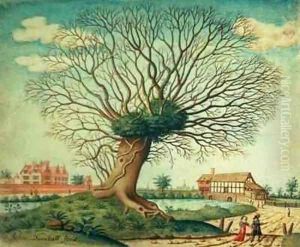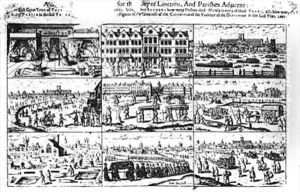John Dunstall Paintings
John Dunstall was an English printmaker and engraver, remembered for his contributions to the art world during the 17th century. Born in 1640, Dunstall's career spanned a period of significant change and development in the printmaking industry in England, reflecting both the technical advancements and the shifting tastes of the period. His work is characterized by its detailed execution and the variety of subjects he tackled, ranging from landscapes and architectural views to more decorative and illustrative designs. Despite the scarcity of personal details about his life, Dunstall's surviving works offer a glimpse into his artistic endeavors and the context in which he operated.
Dunstall's most active period was during the Restoration era, a time when England was undergoing political, social, and cultural transformations. The Restoration of the monarchy in 1660, with Charles II's return to the throne, marked a revival in the arts and a renewed patronage that benefited artists, including printmakers like Dunstall. He capitalized on the growing demand for prints, which were becoming increasingly popular as decorative items among the middle and upper classes. Dunstall's engravings often depicted idyllic landscapes and notable buildings, catering to the tastes of his contemporaries who sought to adorn their homes with such imagery.
Despite the flourishing of the printmaking field during his lifetime, Dunstall did not gain the same level of fame as some of his contemporaries. Nevertheless, his contributions to the art of engraving are significant. He was adept at both line engraving and etching, techniques that allowed for a high degree of detail and precision in his works. This skill is particularly evident in his architectural prints, where the intricate details of buildings are rendered with clarity and accuracy. Dunstall's landscapes, on the other hand, often exhibit a softer, more atmospheric quality, showcasing his versatility as an artist.
John Dunstall's death in 1686 marked the end of a career that, while not widely celebrated, played a role in the development of English printmaking. Today, his works are valuable not only for their aesthetic qualities but also for their historical significance, providing insights into the visual culture of Restoration England. While Dunstall may not have achieved the renown of some of his peers, his engravings remain a testament to the craft and creativity of 17th-century English artists.

